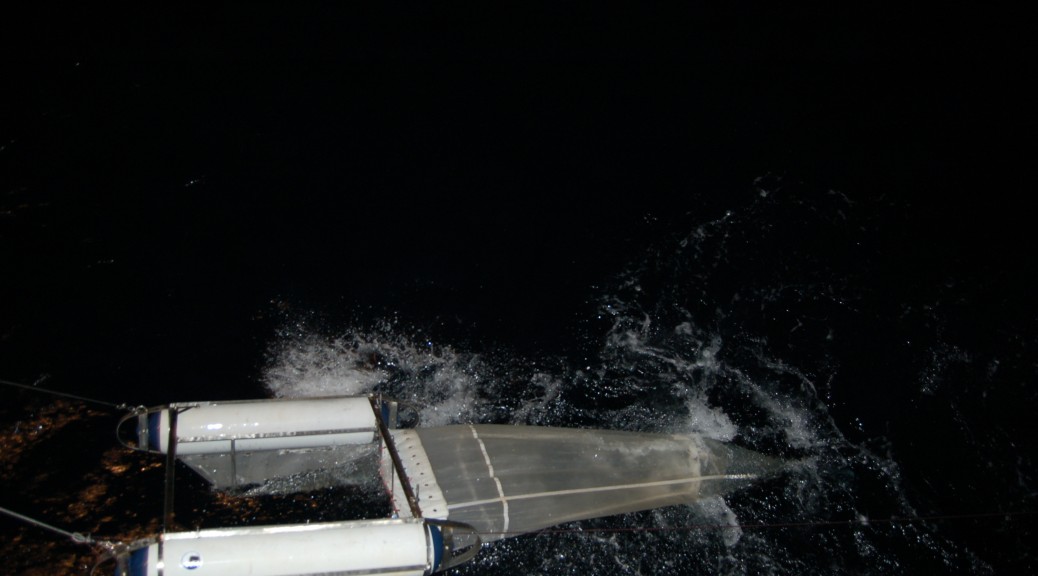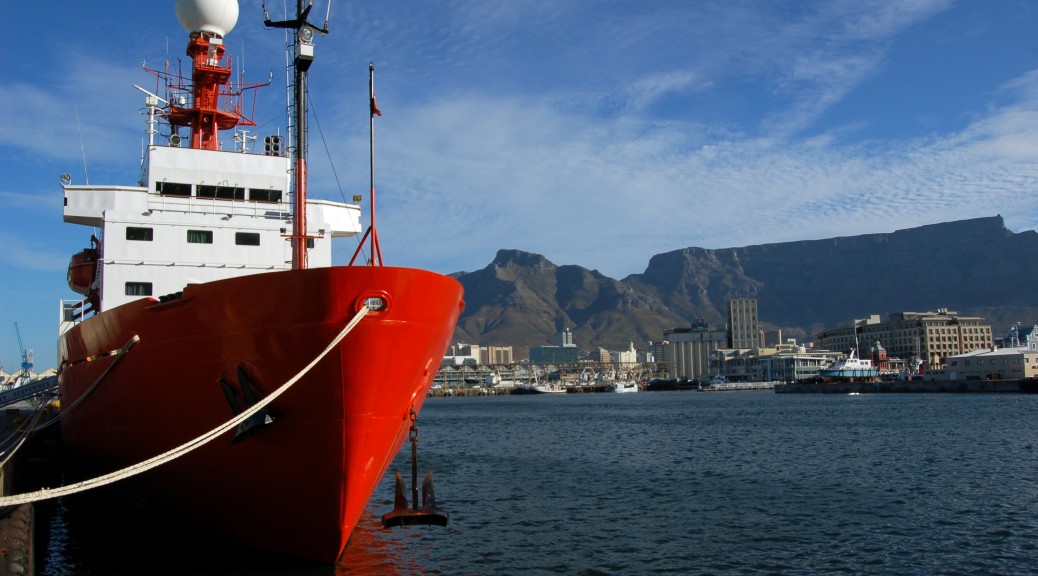S 34° 33’ 51″ E 31° 01’ 48″ – Every day around dawn the Hespérides pauses in its 5,000 nautical mile journey. It does not begin again until mid-afternoon, when its researchers have slaked their thirst for samples with a bewildering variety of bottles and nets. Yet every day scientists ask one another a mysterious question: “Can I have some of your water, please?”
Continue reading Malaspina expedition: Water, water everywhere and not a drop to sample
Category Archives: Datelines
Malaspina expedition: Starting with a splash
S 34° 50’ 20.6″ E 27° 32’ 18.8″ – The first working day of this leg of the Malaspina expedition began with the splash of a Neuston net into the black water on the starboard side of the Hespérides before dawn on Sunday. The bosun, another operations officer, and a handful of technicians and scientists wearing life vests and helmets stood watch with arms folded under the warm yellow running lights of the ship. They were waiting in the rich wet air for a fine mesh net, hanging behind the two metal pontoons of the skate, to fill with creatures of the night. Continue reading Malaspina expedition: Starting with a splash
Malaspina Expedition: First workday
I decided last night to join the 4:30am Neuston net team and the 5:00am Conductivity-Temperature-Depth rosetta deployment. These are gangly-looking devices the size of a go-kart and a Madrid street recycling bin, respectively.
My sea legs weren’t that great yesterday. I wobbled a lot and hit the wall sometimes while walking down corridors. My stomach, luckily, is doing much better–no problems at all and I sleep like a brick. Continue reading Malaspina Expedition: First workday
Malaspina Expedition: Shipping out
Cape Town was filled with chattering Spanish researchers this week, on shore between legs of a circumnavigation that will take them from Cádiz to Sydney and back, by way of the Panama Canal. They chewed on biltong and rode the cable car to the top of Table Mountain. Now they are loading water sampling tubes and unpacking their laboratory equipment on the B.I.O. Hespérides, docked here in Cape Town until this afternoon, when we head for Perth. Continue reading Malaspina Expedition: Shipping out


